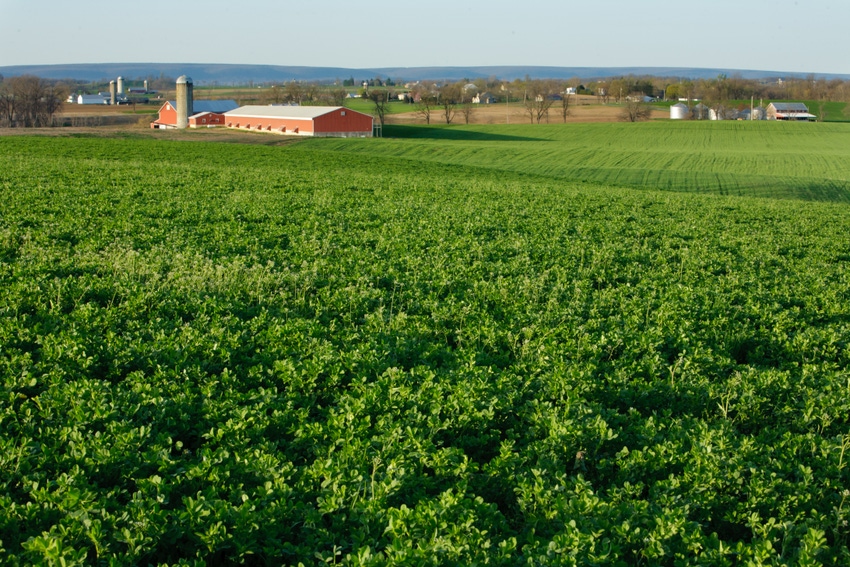Forage alternatives compensate for low hay supplies
Before making any ration changes, livestock owners should consult with a nutritionist.
July 12, 2019

For cows and other livestock, rations are likely to shift to "less salad, more carbs and proteins" as farmers try to keep their animals well fed amid a shortage in hay and other forage grasses in the Midwest.
“They have to start cutting back right now,” said Bill Weiss, dairy nutritionist with The Ohio State University College of Food, Agricultural & Environmental Sciences (CFAES).
Cutting back doesn’t mean the animals will have to eat less, but it means they might need to eat more alternatives that provide the higher amounts of fiber they typically get, he said.
For example, if hay, which is high in fiber, normally makes up about half of the diet for a dairy cow or other animal, some of that hay could be substituted with cottonseed, Weiss suggested. Farmers might also feed their livestock additional grain (protein and carbohydrates) and less of the fibrous (salad-like) portions of various plants, Weiss said.
“It’s what we have to do,” he said.
Before making any changes in what their animals are fed, livestock owners should consult with a nutritionist, Weiss noted.
According to CFAES, many farmers across Ohio are considering different diet options for their livestock because the state’s hay supply is the lowest since the 2012 drought and the fourth lowest in 70 years. Also, Ohio is having the wettest yearlong period on record, which has not allowed much hay to be cut at the right time for it to be the highest quality.
Dairy cows are particularly affected. Most dairy farmers feed their cows large amounts of corn silage, but the wet spring has delayed or prevented the planting of corn. So, with fewer corn acres expected to be planted and an already low supply of hay, farmers are scrambling to plant other crops to feed their animals, such as cool-season grasses, including oats and cereal rye.
“Timing is critical here,” Weiss said.
Some of the options being considered for animal feed are grasses such as sorghum and sorghum-sudangrass and other warm-season summer annuals, CFAES said. If planted soon, they can be harvested in September through early October and then fed to animals.
“These feed options are not as nutritious as conventional ones, but we can make them work,” Weiss said.
Farmers who want to plant summer annuals to feed their livestock need to do so before July 15 in order to have enough of a warm growing season to be able to harvest before frost arrives, CFAES forage specialist Mark Sulc added.
Other cool-season crops can be planted a little later, starting the last week of July and into August, Sulc said. These include oats and spring triticale, which will be ready for harvest starting in early October and into November. Oats and spring triticale can also be planted in mixtures with cereal rye, which has the advantage of being able to survive the winter and will produce animal feed early next spring.
Since many farmers will be planting these annual crops for the first time this year, it’s critical for growers to know the requirements for each type to produce sizeable yields, Sulc said.
The flurry of planting annual crops for livestock feed “will help the shortage, but it’s not going to solve it completely,” he said. “We can’t grow enough this year to supply the entire demand. That’s why we need to consider alternative fiber sources.”
You May Also Like



